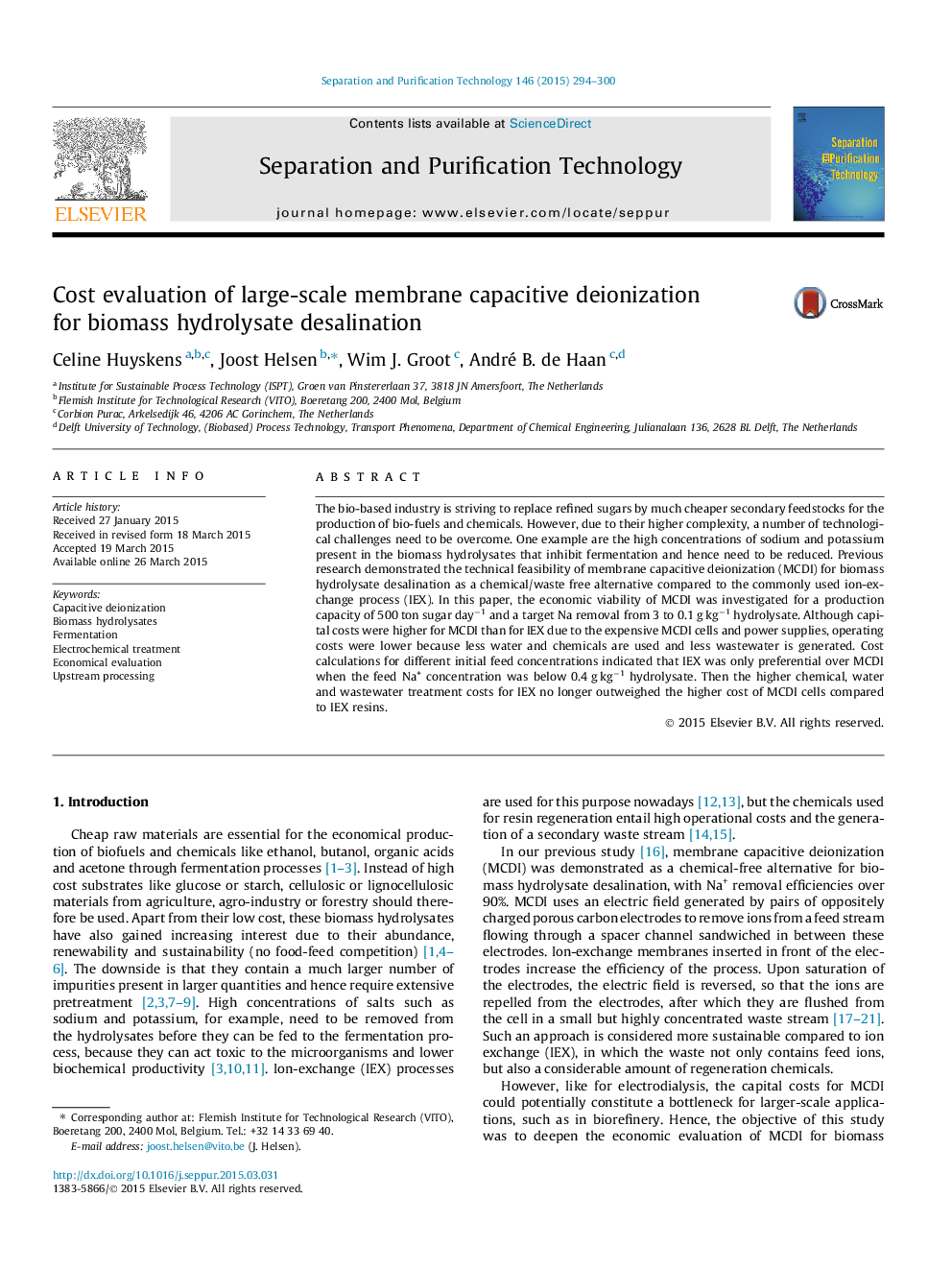| Article ID | Journal | Published Year | Pages | File Type |
|---|---|---|---|---|
| 640732 | Separation and Purification Technology | 2015 | 7 Pages |
•The economic viability of MCDI for biomass hydrolysate desalination was examined.•CAPEX were higher than for IEX due to the expensive MCDI cells and power supplies.•But OPEX were lower than for IEX because of the lower water and chemicals usage.•IEX is only preferential over MCDI for low feed salt concentrations.
The bio-based industry is striving to replace refined sugars by much cheaper secondary feedstocks for the production of bio-fuels and chemicals. However, due to their higher complexity, a number of technological challenges need to be overcome. One example are the high concentrations of sodium and potassium present in the biomass hydrolysates that inhibit fermentation and hence need to be reduced. Previous research demonstrated the technical feasibility of membrane capacitive deionization (MCDI) for biomass hydrolysate desalination as a chemical/waste free alternative compared to the commonly used ion-exchange process (IEX). In this paper, the economic viability of MCDI was investigated for a production capacity of 500 ton sugar day−1 and a target Na removal from 3 to 0.1 g kg−1 hydrolysate. Although capital costs were higher for MCDI than for IEX due to the expensive MCDI cells and power supplies, operating costs were lower because less water and chemicals are used and less wastewater is generated. Cost calculations for different initial feed concentrations indicated that IEX was only preferential over MCDI when the feed Na+ concentration was below 0.4 g kg−1 hydrolysate. Then the higher chemical, water and wastewater treatment costs for IEX no longer outweighed the higher cost of MCDI cells compared to IEX resins.
